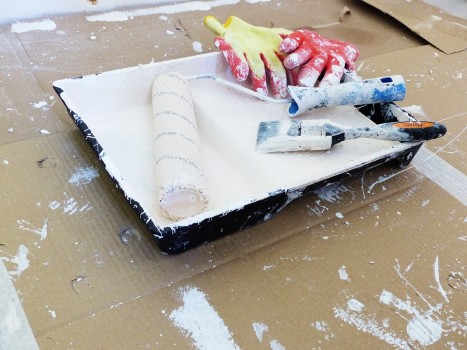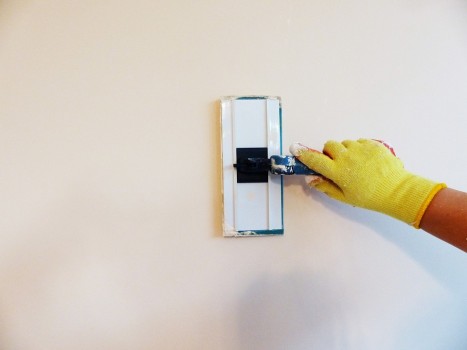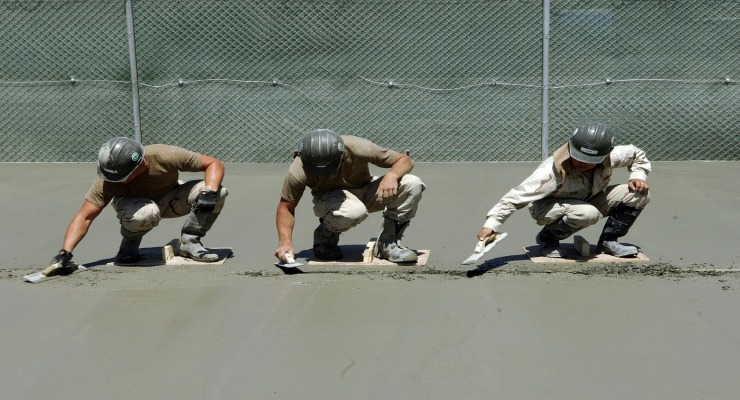How to prep walls for painting? A guide to priming walls
Are you planning to refresh the walls at your home? Painting is something you can easily do yourself - especially considering the types of paint available on the market, which are very easy to apply. Very often, a question arises: what about wall priming? Is it always necessary? When and how to prime a wall to prepare it for painting?

Priming walls - what is it?
Priming walls is simply preparing the surface for painting. It has various aspects - it all depends on the condition of the wall.
There are many advantages of using the right type of product. In fact, it is the basic preparation recommended for every interior that might be prone to moisture. A well-matched primer creates a special waterproof barrier, thanks to which the walls will be far more resistant to the conditions of the room. It’s only one of the many benefits of walls priming.
Other advantages of priming walls before painting are:
- leveling the absorption ability across the whole surface,
- smoothening the wall,
- strengthening the surface,
- increasing paint adhesiveness and efficiency,
- toning the color of the previous paint layer - especially in dark shades,
- preventing paint from peeling off,
- increasing resistance of the surface to cracking.
Preparing a wall for painting - is priming always necessary?
Priming walls before painting is obligatory if you need to smoothen the surface or strengthen it before applying the paint. Primer also increases adhesiveness of the wall when there is an old layer of paint on it.
In most cases, it is necessary to prime walls before painting. Especially if the building is new, it is being finished and the walls have never been painted before. In this case you can create a consistent layer which makes the paint adhere better. However, priming walls classified as “dirty” - meaning surfaces already painted with absorbent paint, is also recommended.
Remember! It is necessary to use paint primer if the old layer has been scraped off or the wall was repaired by e.g. plastering small indentations as a result of mechanical damage.

How to check whether you need to apply paint primer?
It is easy to check if the walls need priming - there are two methods. They differ from each other by the fact that they measure different parameters.
One of the methods allows you to determine if the wall is prone to moisture. To do this, dampen a sponge or a piece of cloth and press it to the wall for a moment.
If a wet stain appears, it means that the old paint absorbs moisture. One should use appropriate paint primer.
The other method tests the durability of the wall and the old layers of products. The basic tool you need is a piece of painter’s tape. Stick it to the surface and quickly rip it off. If anything comes off with the tape, it is absolutely necessary to prime the wall. It is recommended to choose a better type of paint primer, as you cannot be sure what products have been used on the surface before.
Priming walls before wallpaper - when is it necessary?
Priming walls before hanging wallpaper or after wallpaper removal must be always done - regardless whether the building is new or renovated. It also does not matter what types of plaster have been used in the room. The only difference is the type of primer you are going to use.

Wall primer - how to choose the right product?
When choosing a wall primer, it is recommended to buy a product suggested by the manufacturer of the paint you are going to use. There are many different products available on the market, designed for a particular type of surface. You might use:
- a universal product - it works in every case, but its properties will not always be the best you could get.
- hardening paint primer - it is perfect for not damaged, slightly dirty walls,
- a penetrating product - it is the best choice for walls of irregular structure and when there is a risk of high humidity in the room.
How to prime a wall step by step - with a paint spray or by hand?
If you have already chosen the right product, you should learn how to properly prime the wall.
Most of the products available on the market can be used without preparation. All you need to do is mix the substance and apply it to the surface.
There are two methods of application:
- using a paint brush,
- using a paint roller.
A thick paint roller is definitely more convenient to use. Therefore, most people choose this solution.
One might wonder, however, if it is possible to prime walls using a paint spray. It’s a highly recommended method for paint primers. It should be done by a professional, who knows how to do it and has specialist equipment.
Priming walls and other surfaces is useful when painting and wallpapering, but not only. It can be done for many other situations. Specialist products can prepare the surface for tiles or styrofoam boards. For this reason, priming is recommended also for outside walls, to increase the building’s resistance to changing weather conditions.
FAQ


